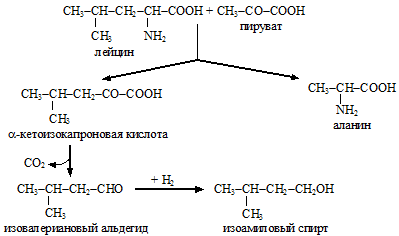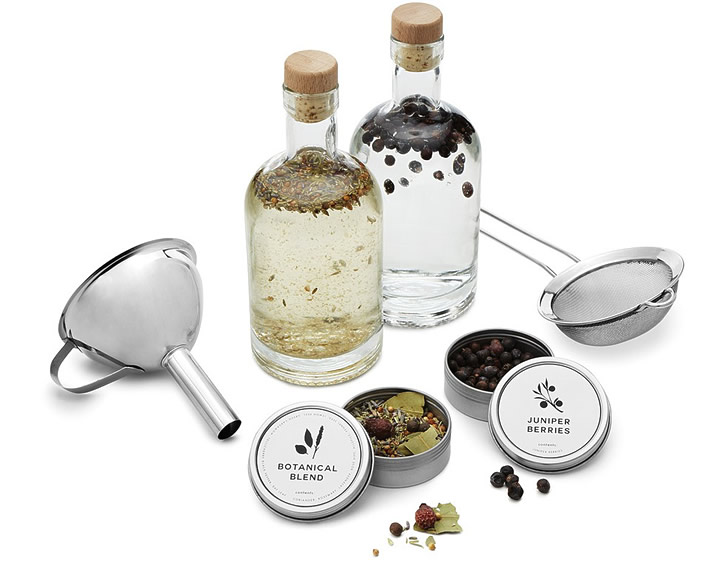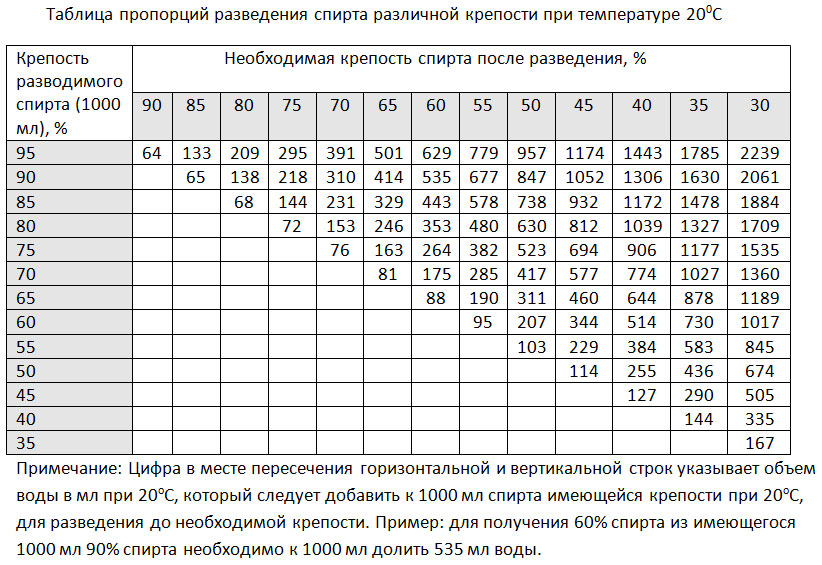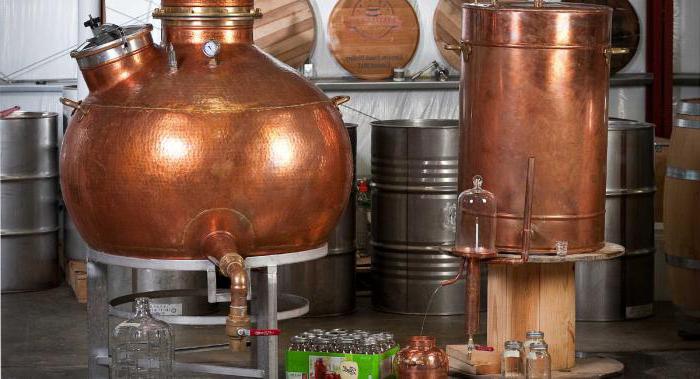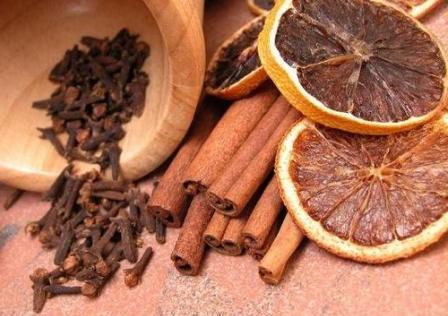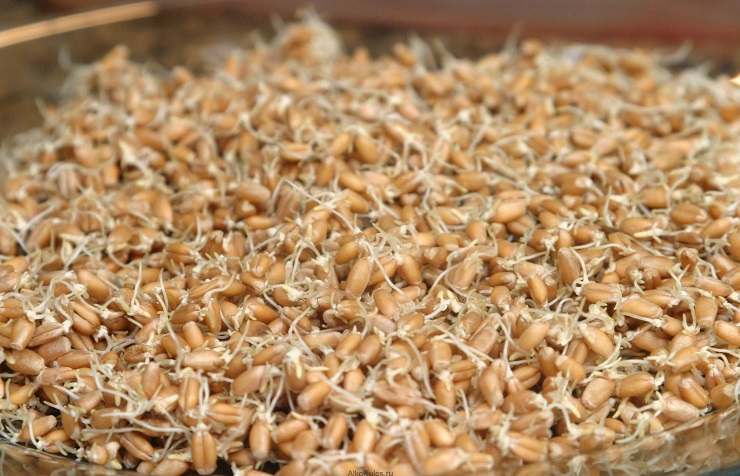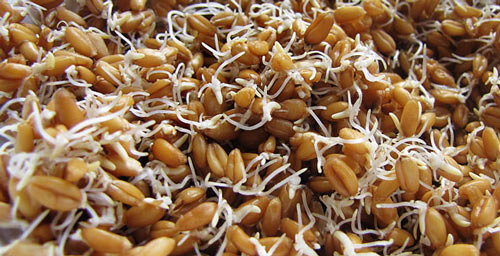What can replace gruyere cheese. Swiss Gruyere cheese
Gruyere cheese - one of the famous Swiss cheeses known throughout the world. Cheese got its name by the name of a village in the Friborg valley, where it was first produced.
Gruyere is made from whole cow's milk and matures for five months or longer. It is a pale yellow hard cheese with a slightly nutty flavor. Gruyere cheese may be small holes, but may not have them.
Gruyere cheese story
This cheese was first produced back in 1115. The tradition of cheese production continues today.
The Gruyère region was known for its cheese production in those days. Cheese was known in France and Italy.
The 17th century marks an important stage in the production of cheese. It was in the 17th century that this cheese became known as Gruyere. The era of the export cheese boom begins. At this time, cheese begins to be labeled, thereby asserting their rights to produce cheese under that name.
In the 18th and 19th centuries, due to the large emigration, cheese began to be produced not only in the town of Gruyere, but also in other regions of Switzerland and even in France.
In 2001, Gruyere cheese received the status of AOC - a controlled designation of the origin of the product. This means that only cheese that is produced in the cathons of Switzerland Neuchatel, Jura, Born and Vaud can be called that.
In 2011, Gruyere cheese made in Switzerland received a protected designation throughout Europe. Cheese made in Switzerland is labeled LE GRUYRE, the country of origin of SWITZERLAND is written at the bottom and the red-blue square on the side.
 Gruyere cheese production
Gruyere cheese production
And to this day, 100% traditional cheese production technology is preserved, which is passed on from generation to generation, which gives the cheese its own unique taste and impeccable quality. The production of cheese is strictly regulated at each stage, starting with milk.
Cows that provide milk for cheese production graze exclusively on natural pastures in summer. And in autumn and winter they get natural hay without additives and silage. Twice a day, in the morning and in the evening, each milk producer hands it over to the cheese factory to which it is attached.
Morning milk is poured into a copper vat with evening milk, which has settled all night.
The cheese maker adds fermentation made from whey to make the milk ripen.
Then rennet, a natural ingredient extracted from the calf’s stomach, is added to make the milk curd.
After 35-40 minutes, the milk will turn into a beautiful thick mass. Until the milk is heated, this mass retains all its flavors. This is one of the qualities of milk.
Then the vats with milk are gradually heated to a temperature of 57 degrees for 40-45 minutes with constant stirring.
After granules of cottage cheese the size of a grain of wheat are formed, a sample is taken and the texture is checked.
The resulting granular cottage cheese is poured into round shapes and pressed for about 20 hours.
The next day, the pressed wheels of cottage cheese are removed from the mold and placed in a 22% salt solution for 24 hours.
Then the ripening of the cheese begins. Cheese wheels are stored for three months in the producer's basement. After three months, the cheese is placed in caves for the slow ripening of cheese at a humidity of 90% and a temperature of 15 degrees. During this time, the wheels are brushed with salt water. Cheese ripening lasts from 5 to 18 months.
After 5 months of aging, the cheese goes on sale.
Gruyere cheese has a different taste depending on the ripening period. From 6 to 9 months - this is a soft and refined taste of cheese. This cheese is called classic.
Starting from 10 months, the cheese acquires a delicate aromatic taste.
Starting from 18 months or more, cheese becomes vigorous.
Using Gruyere Cheese
Gruyere cheese is known as one of the best cheeses for baking, which has a special, but not suppressing taste and aroma. Gruyere melts well, so it is well suited for fondue.
In addition, this cheese can be used in sandwiches, in the preparation of salads and pastas.
How to replace gruyere cheese
Gruyere cheese is a hard cheese. Therefore, it can be replaced with any hard cheese, including our Russian ones. But, unfortunately, its delicate sweetish-nutty flavor is unlikely to replace anything.
Interesting Facts
To obtain a cheese head weighing 80 kg, 800 liters of natural whole milk are used.
Gruyere cheese is produced only in the warm season, from June to September. It was at this time in the pastures that there was an abundance of herbs and flowers that give such a unique flavor to cheese.
Cheese is so famous all over the world that manufacturers organize excursions to factories where cheese is produced. Therefore, being in Switzerland in the summer, it is possible to see the production of cheese and get small samples of cheese with different ripening periods.
Watch the video on how to make gruyere cheese
Get the latest articles to your inbox
This city is considered the capital of fondue. But fondue would never have appeared without a gruyere. And Gruyere would not have appeared without Gruyere. Does the last sentence seem crazy? Then I’ll clarify: Gruyere is both cheese and a small city, where this cheese was first produced.
But first about the cheese.

The cheese factory La Maison du Gruyere is located in Gruyere, where the production process of the cheese of the same name can be viewed in a special museum. Entrance is paid, but for Switzerland the price that is asked for entry is more than humane, in addition, the ticket price includes several small pieces of cheese of different aging periods. First, you will be offered an exposition that tells about the herbs of alpine meadows and cows, from the milk of which this cheese is obtained. If you are going to those places - I give the address:
La maison du gruyere

After that, you can go into the corridor, separated by glass from the workshop where cheese is produced. The production process, in general, is not much different from the manufacture of standard cheese. First, the milk is heated to 34 degrees, add the starter and rennet, which separates the whey from the curd mass.

A special apparatus cuts the curd mass into small pieces and mixes it in serum, which is already subjected to more intense heating. At this time, the curd mass acquires properties that eventually allow it to become a monolithic whole with the help of presses, which are visible in the right half of the workshop.

After that, large heads of cheese are immersed in the brine, but now, as you can see, the brine is idle idle: the process of making cheese takes several months, and it takes only 24 hours in the brine.

The longest stage of gruyere production is maturation, where it is stored at a certain humidity and temperature, regularly turned over and moistened with brine. The result is standard Gruyere heads weighing about 35 kilograms. This, unfortunately, is not real, otherwise too many would try to pinch off a piece.

The museum also found a map of Swiss cheeses, but I am convinced that this is one big hoax. Everyone knows that Switzerland is one of the great cheese powers in Europe, sources mention almost 500 varieties of cheese that are produced here, and this is not in doubt. However, it is worth digging a little deeper, trying to find these 500 varieties - and it turns out that the cheese seems to be there, but it ... is not. Gruyere and a dozen well-known varieties are well known, but you will find almost no mention of the rest! The same story with cheese dairies: they seem to be there, but somewhere there, and it’s impossible to get on them. Compare with France or Italy, where each village has its own kind of cheese, unlike the others! .. Why so - I’m lost in conjecture, but I suspect that a beautiful story about Swiss cheese is just a cover for some other things that are better dont know.

At the very end, of course, you will find a store where you can buy not only cheese, but also ready-made fondue. The most popular fondue variety in these places is called moitie-moitie. This translates roughly as "half-to-half" and denotes the ratio of gruyere and vashéron frriborgois cheeses. In addition to cheese, the composition includes wine, a thickener, and you can figure out the price, given that 1 Swiss franc is now approximately equal to 1 US dollar.

You already saw how gruyeres are made these days, but in such copper boilers, cheese was cooked before the industrial revolution.

Acquainted with the Gruyeres, you can walk around the Gruyeres. It’s beautiful here: where there are mountains, it’s always beautiful.

But the matter is not only in the mountains: Gruyere is a small but very pretty city, and in addition with a castle. The road is paved with cobblestones and leads to the castle framed by buildings as old as beautiful.

Small but cozy church.

At some point, however, all this orderly Middle Ages is rather unceremoniously interrupted by installations in the style of shocking high-tech.

Here is the museum of the artist Giger, who created costumes for “Alien” and other science fiction films. As I understand it, the inside is about the same, if you are a fan - maybe you need to go there.



You can go inside the castle, or you can simply go around it around the perimeter and look at the views that open at its foot. Partly nice.

Mostly usually.

And the castle is powerful!

Here is one. Windows, of course, were already cut through after the stronghold lost its strategic importance.

A few more views of the surrounding Gruyeres and mountains. The place is nice, albeit quiet.

However, for many, the “quiet” is a virtue, not a disadvantage, and I understand them. Alien, created by the artist Giger, for example, managed to take a sip of Hollywood fame, but decided to settle here, and apparently for good reason.

In general, if you decide to come to Gruyeres to look at the production of cheese, be sure to take a walk.

You will not regret.

Switzerland is famous not only for hours and delicious chocolate, but also for excellent cheese. This country has long been entrenched in the status of a world producer of elite varieties of this dairy product.
Gruyere cheese is a fairly young variety that traditionally got its name from the locality of production. It is not as popular as cheddar or parmesan, but definitely deserves special attention. Who knows, maybe this particular cheese will win your heart after the first piece.
Gruyere: interesting facts, description and origin
The cheese is made from cow's milk of the highest class, has a creamy yellowish color, a fairly dense texture and has no holes. An interesting fact, but the first documentary references to this variety have been found since 1115, and from the beginning of the XVII century its official name “Gruyere” appears in the records. Like most Swiss varieties, it was named after the locality in which it is produced. Only the cheeses that are produced in the following cantons (settlement areas) can bear the name "Gruyeres":
- Nevshtal;
- Friborg;
- Berne;
Nevertheless, this variety is considered to be young, because it received its official AOS status only in 2001 and from that moment it was entered into the register.
Another interesting feature of this cheese is that it has a French "brother". The French Gruyeres include Conte and Beaufort. Distinctive features of this cheese are: a more delicate texture and the obligatory presence of holes. According to reviews, Gruyere cheese is not inferior in taste to the most famous Swiss varieties, which is why it belongs to the category of the highest class and has the status of elite.
Find for true gourmets: the taste of the product

Gruyeres can be attributed to sweet varieties, however, like all cheese, it has a salty taste. A distinctive feature is a pronounced creamy creamy taste and subtle walnut tones. Gruyere cheese has a very strong influence on the ripening period: over time, it acquires a sharp and piquant note with clearly noticeable earthy hues. The longer the exposure, the more difficult the bouquet of taste and aroma of the cheese becomes. Aging also changes the structure and texture of the finished product: after 5 months, the cheese becomes heterogeneous, harsh and a little grainy.
Secrets of making and ripening cheese

Manufacturing technology is quite simple:
- Milk is heated to 34 degrees and combined with sourdough (thermophilic bacteria) and rennet. For the preparation of cheese, only copper containers are used.
- Gradually, the mixture coagulates and is divided into two fractions: whey and curd.
- The base is heated to a temperature of 54 degrees, the cooking process begins. Usually it lasts no more than two hours. The readiness test is carried out by checking the mass for adhesion and elasticity.
- Then the mass goes through filtration and press, which help get rid of whey residues.
- Next, the process of soaking the semi-finished cheese in brine, which lasts 24 hours, begins. During this time, the mass manages to be saturated with salt only half.
At this stage, the cooking stage ends, and we have at the exit a delicate slightly salted semi-finished product. Next is the no less intense process of ripening gruyere cheese:
- Cheese is placed in a storage, where a certain temperature and humidity is maintained throughout the ripening time.
- The first 10 days, the heads are constantly doused with saline and turned over, then this is done twice a week, and then, for three months, only once a week.
The cheese passes the first quality control after 4.5 months, each head is subjected to verification. If everything is in order, then the product goes on sale, if not, it remains in storage for further aging. According to age, the gruyere is divided into five types:
- young soft - 5 months;
- semi-salted - up to 8 months;
- salted - up to 10 months;
- top grade - from 1 year;
- old - more than 15 months.
For every taste: features of the types of gruyeres

Each cheese production area has its own subtleties of manufacture and aging, so each type of gruyere acquires its own unique taste and specific features. Two types of cheese deserve special attention:
- Alpage - This species is very popular among lovers of pure organic products. After all, it is done only in the summer and only in areas that are adjacent to the Swiss Alps.
- Premier Cru - famous for its exceptional taste due to the fact that it ripens exclusively in the Friborg caves under unique climatic conditions.
It is worth noting that this is a rather expensive pleasure, the price of Gruyere cheese in Moscow can reach 400 rubles per 100 grams. But believe me, it costs such money, because it is not only amazingly tasty, but also extremely useful.
Let's look inside: a detailed analysis of the composition

This cheese can not be called dietary, because it is one third composed of animal fats. It is very rich in protein - 29% per 100 g of product, and the rest is water. But do not be afraid of the fat content of Gruyeres, because basically they are polyunsaturated fatty and essential amino acids. Another useful component is ash, which has excellent adsorbing and anti-toxic properties. Like any dairy product, Gruyere cheese is very rich in calcium - more than 1000 mg per 100 g of product. Also in the composition you can meet the following useful components:
- b vitamins;
- phosphorus;
- selenium;
- sodium;
- potassium;
- magnesium.
Useful properties of cheese
The usefulness of this cheese increases in proportion to its age, the longer the exposure - the more valuable the product. Firstly, it is an excellent source of the most easily digestible protein, which is 100% broken down by our body. Secondly, hard cheeses are a source of rare elements, fatty acids and of course vitamins. Consider the effect of Swiss Gruyere cheese on the body:
- Increases cell metabolism and regeneration processes. This significantly slows down aging and accelerates wound healing, for example, after surgery.
- It affects the nervous system, improves memory and helps to cope with depression. In addition, the use of cheese has a beneficial effect on sleep.
- Calcium strengthens bones and teeth, and also supports muscles in working condition.
- It has a beneficial effect on pressure, gives a lot of strength and energy.
- With regular use, it helps to increase hemoglobin levels.
In addition, it is a fairly high-calorie and nutritious product, and therefore recommended for pregnant women, children and the elderly.
Can cheese be harmful?
Do not eat gruyere cheese if you have the following conditions:
- impaired kidney function (nephritis, pyelonephritis);
- gastritis and increased acidity in the stomach;
- hypertension and heart problems;
- urolithiasis disease;
- allergy.
Cooking Product

This is a very versatile variety: it is perfect for spaghetti, salads and even simple sandwiches. The cheese melts well and retains a viscous consistency for a long time, so it is indispensable in casseroles, julienne and fondue. Gruyere is excellent in itself, it goes well with fruits and various sweet wines.
And how to replace the Gruyere cheese? If you liked a special recipe, but your city has a problem with elite varieties of Swiss cheese, you can safely use cheddar, parmesan or pecorino - these varieties are most suitable as analogues.
Gruyeres is a cheese originating in Switzerland. It is considered a real attraction of this European country. Almost 30 thousand tons are produced per year. The features of this product, as well as how it can be replaced, will be discussed in our article.
The real Swiss cheese
Perhaps the phrase is a household word. It means a product, of course, cheese, of exceptional quality. And although quite recently two countries - France and Switzerland - were arguing where exactly they started to produce gruyeres, since 2001 cheese can officially be considered Switzerland as its legitimate, documented homeland. Moreover, a special commission assigned him the status of “Name controlled by place of origin”. That is, only in this country (Switzerland) they have the right to produce cheese under this brand and call it Gruyere. There are opinions that this product began to be produced more than a thousand years ago. Just imagine how skill was perfected during this time and all the nuances of its cooking were taken into account. Perhaps that is why the Gruyere cheese is so popular in Europe and beyond.
Details on the taste and appearance of the product

A true gruyere cheese is necessarily made from unpasteurized cow's milk. It is best if the raw materials were obtained in the summer, when the cows graze on the famous and eat fresh, tasty grass. The consistency of cheese is quite dense, it has no characteristic holes, and its ripening period is on average one year. But, despite this, within four months after manufacture, the cheese can be eaten. Experts say that its taste resembles dry fruits, but as it ripens, it becomes more tart, pronounced, acquiring a “earthy” flavor. Of course, professional tasters know better what shades of taste and aroma this cheese should have. The rest of the gruyeres are recommended to use fondue for cooking (a traditional Swiss dish, very simple and tasty - pieces of bread, meat, etc. are dipped into the melted milk product). In addition, it is an excellent addition to wine, as well as an addition to spaghetti, salads and other dishes where cheese is traditionally placed.
What can replace the Gruyere cheese?

Of course, not everyone can find Gruyere cheese in stores. How to replace it, if, for example, the recipe says that you need to use this particular grade for cooking? Here is what the experts advise: firstly, it should be borne in mind that the gruyere is very much therefore and an analogue must be sought with the same characteristic. Most suitable for replacing Swiss delicacies are Emmental or Jarlsberg cheeses. The first name is better known to Russian housewives - Emmental cheese can be found and bought in any large supermarket. Although, if you are looking for an even cheaper substitute, remember: Gruyere cheese is an analogue, in fact, of any hard cheese with a pronounced taste. That is, instead of it, you can put in a dish a product called “Russian”, although this will already be a little wrong. Still, the special, pronounced aroma of dried fruit can not be replaced with anything.
Gruyere cheese price
It was mentioned that this product can be eaten after 4 months of special aging. However, there is a clear gradation of this cheese depending on its age. So, if he “turned” 4-5 months old, it has the name “sweet”, if cheese is already 7-8 months old, then it is already “semi-salted”, and the one-year-old heads of the gruyere are marked as “top grade” or “reserve”. By the way, up to 12 liters of high-quality milk are used to produce 1 kilogram of product. And the heads themselves, which would be better to call heads, have a weight of 25 to 40 kilograms and a diameter of 55-65 cm. Therefore, you will not see such a product on sale in its entirety, as a rule, the heads are cut into large pieces of a wedge-shaped shape. Gruyere cheese is quite expensive, especially outside its homeland. In Russian supermarkets, its price is about 300-400 rubles per pack of 200 grams, that is, from 1,500 thousand rubles per 1 kilogram. Usually it is exported already in vacuum packaging with the corresponding inscription (Le Gruyere). Remember that the birthplace of real Gruyere cheese is Switzerland. Cheese, on the packaging of which appears any other country, is not original. Only a dairy product made in the Gruyère district can bear this name.
What dishes are traditionally prepared using gruyere

As we have already mentioned, the most popular dish of this product is fondue. It is traditional for France and Switzerland. Perhaps it is only there that residents can afford to buy from a half kilogram of this delicacy (and it takes no less than fondue) and dip dips of bread, ham and other products into it to taste. Due to the fact that the cheese melts perfectly, it is often used to make fillings and sauces, it does not clog the taste of other ingredients. By the way, it is Gruyere that is used in the classic recipe of a popular French dish - onion soup. It also goes well with meat dishes. This cheese is one of the most beloved in Europe. We hope that after reading the article it will become interesting for you to try this product, which is rightfully considered the pride of its region - the small canton of Friborg (Gruyere district) in Switzerland.
Gruyere cheese represents the highest class of cheese-makers of Switzerland. The name directly depends on the place where this cheese is made, which is combed with hard varieties. The distinctive features of this product include a very dense and uniform consistency. Cheese eyes are extremely rare in gruyere cheese (see photo).
This product has a unique smell, as well as a piquant taste with characteristic nutty notes. Gruyere cheese belongs to the list of varieties whose origin is controlled by specialists. Depending on the exposure, several varieties of this product are distinguished:
- sweet - 5 months;
- semi salty - 8 months;
- salty - 9 months;
- top grade - 12 months;
- old - 15 months and more.
Gruyere cheese arrives at store shelves in heads with a diameter of about 50 cm and their weight varies from 25 to 40 kg. On top of the product is covered with a granular crust, the color of which varies from gold to brown. The fat content of such cheese is not more than 50%.
The production process of Gruyere cheese occurs in a certain sequence. To begin with, morning and evening milk is mixed in one large container. Then a special enzyme and an oxidizing agent are added to it. The folding process takes 40 minutes. It is very important to monitor the process, because if you make a mistake even for a few minutes, the final product will be of poor quality or even be classified as defective. Then, using special knives, the mass will be crushed into small granules for 7 minutes. The next stage is heating the resulting cheese grains for 40 minutes. to a temperature of no more than 56 degrees. Now the cheese maker must make sure with his own hands that the mass is elastic and ready for further processing. Then, using a special pump, the mass is divided into forms and the whey is separated. Next, the cheese mass is sent under a press, the weight of which reaches up to 900 kg. This molding takes up to 20 hours, during which time the heads are turned over from time to time. After that, for a day it is sent to saline. At the last stage, the Gruyere cheese ripens in special cellars, in which the temperature is kept at 14 degrees.
Gruyere cheese has a salty-sweet taste. To get 1 kg of the final product, you need to spend exactly 12 liters of milk.
How to choose and store Swiss Gruyere cheese?
When choosing Gruyere cheese, it’s worth looking for heads that have AOS or AOR marking on it, which indicates the authenticity of this product. It is worth storing cheese in the refrigerator after wrapping it with cling film.
Beneficial features
 The use of Gruyere cheese is due to the presence of vitamins and minerals. It contains choline, which normalizes blood cholesterol and helps get rid of edema. Due to the presence of phosphorus and calcium, the process of regeneration and strengthening of bone tissue is activated. In addition, these minerals improve the condition of nails, hair and teeth. Gruyere contains magnesium in cheese, which is necessary for the normal functioning of the heart muscle. Given the potassium content, the cardiovascular system improves. It also contains sodium, which is responsible for the water balance in the body. This is only a small list of useful substances that favorably affect the vital activity of the organism as a whole.
The use of Gruyere cheese is due to the presence of vitamins and minerals. It contains choline, which normalizes blood cholesterol and helps get rid of edema. Due to the presence of phosphorus and calcium, the process of regeneration and strengthening of bone tissue is activated. In addition, these minerals improve the condition of nails, hair and teeth. Gruyere contains magnesium in cheese, which is necessary for the normal functioning of the heart muscle. Given the potassium content, the cardiovascular system improves. It also contains sodium, which is responsible for the water balance in the body. This is only a small list of useful substances that favorably affect the vital activity of the organism as a whole.
Gruyere cheese contains natural substances that supply the body with necessary energy for a long time. It also has many proteins that have a beneficial effect on the condition of muscles, skin, blood and cartilage.
Cooking use
Gruyere cheese is an excellent independent snack, which is often part of the cheese plate. This cheese is used for the national dish of Switzerland - Fondue. In addition, this product is used in baking recipes, it is especially popular in France. Gruyere cheese goes well with meat and vegetables, as well as it is placed in the main dishes, pasta and salads. The taste and aroma of this product is more widely disclosed in combination with white wine, apple cider and dark beer.
Gruyere cheese harm and contraindications
Gruyere cheese can cause harm to people with individual intolerance to the product. Given the high content of lipids, it is necessary to abandon its use during weight loss, as well as with obesity.

